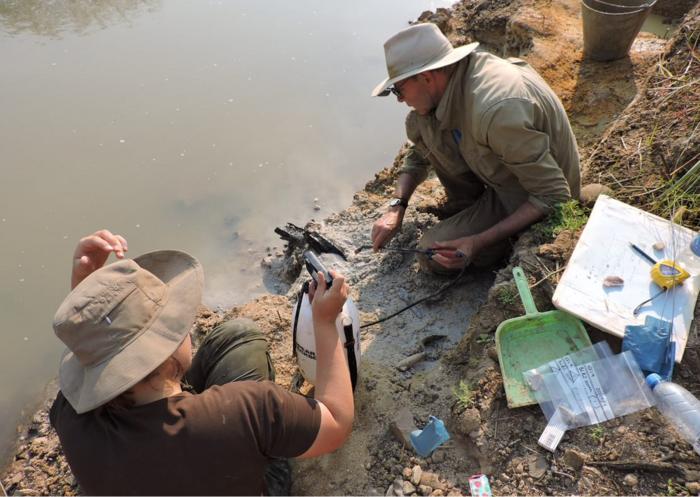[ad_1]
Unique conditions appear to have preserved part of an ancient wooden structure dating back at least 476,000 years. This time was well before the presumed evolution of modern humans, upsetting old notions of hominid development.
No one knows what the structure was, only that it appears to have been fashioned with stone tools to fit together in an interlinking fashion similar to Lincoln Logs. The scientific team led by archaeologist Larry Barham found a single such connection composed of a longer, blackened log and a smaller one with a carved notch.
Excavating Artifacts From the Kalambo River
Kalambo waterfalls on the Kalambo River Located at Kalambo District Council – Rukwa Region (Credit: Zakaria Mgala/Getty)
Barham and colleagues excavated a large section of the bank of the Kalambo River, where the wood had sat waterlogged and amazingly well-preserved. The team also uncovered a wedge tool along the river, a stick for digging, another cut log and a notched branch that dated to between 324,000 years and 390,000 years ago.
The artifacts were all found upstream from the dramatic, 770-foot-tall Kalambo Falls, which straddle the border between Zambia and Tanzania. As is common with waterfalls, the waterway narrows upstream and raises the water table, bathing the area that preserved the early structure.
The researchers speculate that it may have formed part of a raised platform, walkway or foundation for one or more dwellings.
Ancient wooden artifacts are rarely ever found as the organic material commonly breaks down, leaving nothing behind to place in the fossil record. Only under specific conditions, such as a burial in wet sediment, can a wooden tool or structure survive for thousands of years.
Read More: Stone Age Artists in Namibia Were Master Track-Makers
What Do the Wooden Artifacts Tell Us?
The scientific team excavates the fossilized structure. (Credit: Professor Larry Barham/University of Liverpool)
“They transformed their surroundings to make life easier,” said Barham in a statement, “even if it was only by making a platform to sit on by the river to do their daily chores. These folks were more like us than we thought.”
But who were they? Nature notes that while no human remains have been found at Kalambo Falls, researchers did find a 300,000-year-old Homo heidelbergensis skull in nearby Zambia. The fire-building antecedent to Homo sapiens and Neanderthals lived up to 700,000 years ago and were the first hominids to hunt large game with spears.
Researchers dated the Lincoln Log structure using new luminescence techniques which test how much time has passed since a soil sample received light. The result overturns established science, which acknowledges the existence of wooden tools going back 400,000 years but not large habitats.
“Forget the label ‘Stone Age,’” Barham said. “Look at what these people were doing: They made something new and large from wood. They used their intelligence, imagination, and skills to create something they’d never seen before, something that had never previously existed.”
Read More: The Fascinating Path of Neanderthal Evolution: Where Did Neanderthals Come From?
[ad_2]
